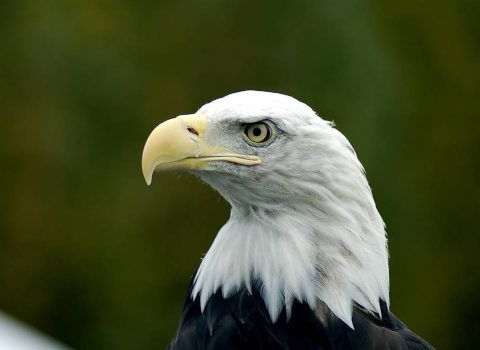Four pairs of endangered red-cockaded woodpeckers took flight in their new home last Friday at Great Dismal Swamp National Wildlife Refuge in Suffolk, Virginia, which hasn’t seen the woodpecker since 1974.
The goal is to establish Virginia’s second population and the only population to date on public land, as well as to boost populations at the northern limit of the species’ natural range in the state.
“The potential to restore the endangered red-cockaded woodpecker to Great Dismal Swamp is very exciting,” said refuge manager Chris Lowie. “This effort illustrates of the role that our national wildlife refuges can play in the recovery of threatened and endangered species. It’s very rewarding to see our countless partners and volunteers bring this to life after many years of planning.”
Last Thursday, biologists captured the birds from healthy populations in the Carolina Sandhills National Wildlife Refuge in South Carolina and in the Palmetto-Peartree Preserve in North Carolina. The birds were transported north to Virginia, where biologists placed the birds in their new digs--pre-dug artificial cavities in native pine trees.
"We're delighted that Virginia will now have a second population of red-cockaded woodpeckers and glad to have helped our partners achieve this," said Michael Lipford, state director of The Nature Conservancy in Virginia. "At The Nature Conservancy's Piney Grove Preserve in Sussex County, we've watched the red-cockaded woodpecker population rise from 11 birds in 2002 to 67 adults this spring. Our experienced staffers were the right candidates to install the 32 artificial cavities needed at Great Dismal Swamp National Wildlife Refuge."
The red-cockaded woodpecker was once common throughout the southern U.S., from southern New Jersey to Florida and west to east Texas and Oklahoma. As mature pine forest habitat was cutover, and forest management practices changed over the first half of the century, the woodpecker’s population significantly declined, spurring its protection in 1970 under the Endangered Species Act.
By 1994, just 4,200 red-cockaded woodpecker breeding pairs remained. Today, in response to new conservation science, recovery, and habitat restoration programs, there are 6,400 potential breeding pairs.
Previous endeavors to reintroduce the birds in Alabama, Arkansas, and Florida have been successful, with the birds populating and reproducing in these areas. At Great Dismal Swamp, biologists are closely monitoring the translocated birds, which were released from their cavities Friday morning. Additional translocations and releases will continue once a year for a minimum of three years.
Bryan Watts, director of the Center for Conservation Biology at the College of William and Mary, said the relocation technique worked well at the state’s other red-cockaded woodpecker site in Piney Grove. “But we need to keep in mind the distinction between introducing birds, like we did last week, versus birds establishing a population, which we won’t know until we see breeding in the spring,” he said.
Partners in the Great Dismal project include the Service, The Center for Conservation Biology at the College of William and Mary, The Nature Conservancy, Virginia Department of Game and Inland Fisheries, North Carolina Department of Transportation, J. Carter and Associates, and other local groups. Funding for the effort comes from the Service’s Cooperative Recovery Initiative, which focuses on restoring threatened and endangered species on national wildlife refuges and surrounding lands.
More resources:
- Photos and video from the release; Caption and credit info (PDF)
- Information on the species
- Story from William and Mary on the release


